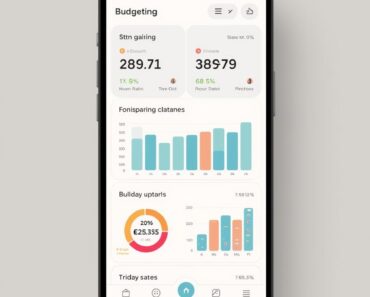If you’ve ever felt like your paycheck disappears the moment it arrives, you’re not alone. With rising costs of living, unexpected bills, and the pull of daily temptations, building savings can feel like an impossible task. The good news is that there are practical, time-tested strategies you can apply right now to stretch your dollar further. These aren’t the usual “skip your coffee” tips. These hacks go deeper, helping you cut waste, redirect money toward goals you care about, and protect yourself from financial stress before it’s too late.
Why Saving Feels So Hard Today
Inflation has made everyday items—from groceries to gas—more expensive. At the same time, monthly expenses from streaming subscriptions, service fees, and debt interest eat away at your budget. The result? Many households are living paycheck to paycheck, even with a decent income.
But here’s the truth: you have more control than you might think. By using the right money-saving hacks, you can put hundreds or even thousands of dollars back into your pocket each year without living a deprived life.
Let’s dive into 7 powerful budget hacks that can make an immediate difference.
1. Automate Your Savings First
One of the most effective ways to build savings isn’t tied to strict self-discipline—it’s about automation. Instead of planning to “save what’s left” after spending, flip the process. Set up an automatic transfer from your checking to a savings account the moment you’re paid.
For example, if you move just $200 a month automatically, you’ll have $2,400 saved by the end of the year without even thinking about it. Automation removes the temptation of overspending and ensures you’re consistently building a financial cushion.
2. Audit and Cancel Hidden Expenses
Most people underestimate how much they’re spending on recurring charges. From gym memberships you don’t use to forgotten app subscriptions, these small leaks add up fast.
Here’s a quick method:
-
Print or download your last two months of bank and credit card statements.
-
Highlight every recurring charge.
-
Ask yourself: Do I use this? Do I need this?
Often, you’ll find at least $50–$100 of waste in “invisible expenses” you can cut instantly. That’s $600–$1,200 per year saved with just one simple audit.
3. Master the 24-Hour Rule
Impulse purchases are one of the biggest drains on savings. Whether it’s Amazon deals, new clothes, or gadgets, spending in the moment often leads to regret later. This is where the 24-hour rule becomes your best friend.
The concept is simple: when tempted to buy something non-essential, wait at least 24 hours before making the purchase. Most of the time, the urge fades, and you save yourself unnecessary spending. If after 24 hours you still feel it’s worth it and within budget, go ahead. This strategy can save hundreds a year without feeling restrictive.
4. Switch to Smarter Grocery Shopping
Food spending is one of the largest flexible expenses for families. Here’s how to cut it without sacrificing quality:
-
Plan meals: A quick 10-minute plan can prevent costly last-minute takeout.
-
Shop with a list: Studies show shopping with a list reduces impulse buys.
-
Buy generic: In many cases, store-brand products are just as good as the name brand, at a fraction of the cost.
-
Bulk smartly: Buy non-perishables in bulk, but avoid stocking up on items you won’t actually use.
Even modest changes in grocery habits can result in $50–$100 in monthly savings. Over a year, that’s up to $1,200 in your pocket.
5. Renegotiate Bills Like a Pro
It’s easy to assume bills are fixed costs, but in reality, many companies are willing to give discounts if you simply ask. This hack works especially well for phone bills, internet, insurance, and even credit card interest rates.
Here’s how:
-
Call your provider and politely mention that you’re considering switching to a competitor offering a lower rate.
-
Ask if they can match or beat the offer.
-
Be firm but respectful.
Even a $20 discount on a single monthly bill equals $240 in annual savings, and often it only takes a 10-minute phone call.
6. Learn to Embrace “No-Spend” Days
One overlooked yet powerful hack is implementing no-spend days into your weekly routine. A no-spend day is exactly what it sounds like: a day where you commit to not spending money on anything outside of essential bills or emergencies.
Start by choosing one day a week. Pack your meals, avoid online shopping, and find free entertainment alternatives. Over time, many people expand this to two or three days per week. If you save $20–$30 each no-spend day, that’s easily $1,000 or more saved annually with little effort.
7. Upgrade Your Mindset: Value vs. Cost
The final hack is less about cutting dollars and more about changing how you view spending. Instead of asking, “Can I afford this?”, start asking, “Does this expense bring me real value?”
By reframing your choices through value, you naturally prioritize experiences and purchases that bring genuine happiness and eliminate those that don’t. This mindset shift prevents wasteful habits and creates a powerful psychological barrier against consumer culture’s constant push to spend more.
How to Put These Hacks Into Action
Knowing these hacks is one thing, but applying them consistently is where the real magic happens. Here’s a simple action plan to help you start today:
-
Week 1: Set up an automated savings transfer.
-
Week 2: Conduct an expense audit and cancel at least two unused subscriptions.
-
Week 3: Practice the 24-hour rule on every non-essential purchase.
-
Week 4: Try your first “no-spend” day and track grocery expenses with a meal plan.
By stacking these habits, you don’t just save money—you create a sustainable lifestyle that keeps building momentum.
The Long-Term Payoff
Individually, each of these hacks might seem small. But when combined, they create massive financial impact. Imagine:
-
Saving $200 per month automatically = $2,400 per year.
-
Cutting $75 of wasteful expenses = $900 per year.
-
Smarter grocery shopping saves $1,000 per year.
-
Renegotiating bills adds another $300–$500 in savings.
-
Adding no-spend days and curbing impulses could free another $1,500 annually.
In total, these steps can easily free $6,000 or more each year—without requiring a second job or extreme sacrifice. Over five years, that’s $30,000 that could go toward debt repayment, investments, or a major life goal.
Final Thoughts
Every day you wait to take control of your spending is another day money slips through your fingers. The reality is simple: you don’t need a huge raise or a second income stream to get financially ahead—you just need to start making smarter, more conscious decisions with the money you already have.
These seven budget hacks aren’t about penny-pinching; they’re about reclaiming control, living intentionally, and setting yourself up for long-term security. The sooner you put them into practice, the more you’ll save—before it’s too late.
The choice is yours: let your money continue running your life, or take these steps and finally make it work for you. The clock is ticking, and your future self will thank you for starting today.




